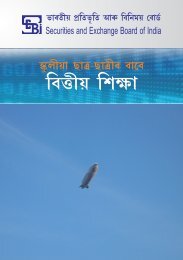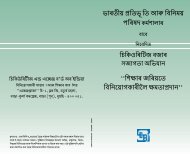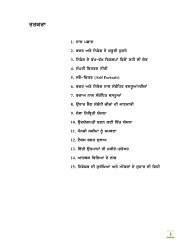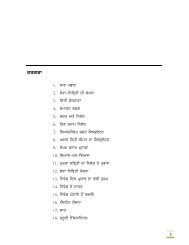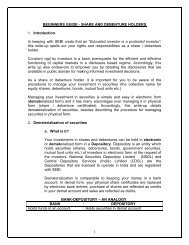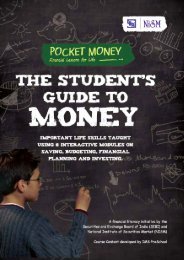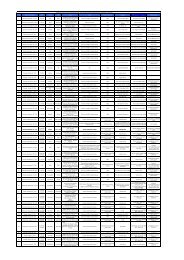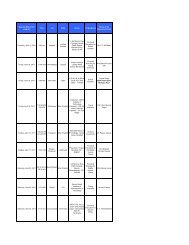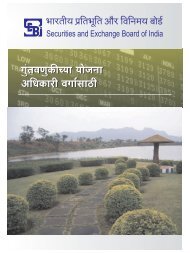financial planning 3. - Securities and Exchange Board of India
financial planning 3. - Securities and Exchange Board of India
financial planning 3. - Securities and Exchange Board of India
- No tags were found...
Create successful ePaper yourself
Turn your PDF publications into a flip-book with our unique Google optimized e-Paper software.
choice in structuring the post-retirement benefit pay-outs. Also, at the time <strong>of</strong> vesting you canmake a lump-sum tax-exempted withdrawal <strong>of</strong> up to 33 percent <strong>of</strong> the accumulated corpus.CASE STUDYRaman 59, is <strong>planning</strong> to retire in six months’ time when he reaches 60. Currently, hisretirement nest is worth around Rs 7,50,000. He intends to use it to buy an annuity, <strong>and</strong> wantsone that will provide income for him. As a non-smoker, with no serious health problems, hewould receive an income <strong>of</strong> Rs 45,000 per year or Rs 3,750 a month (assuming an annuityrate <strong>of</strong> 6%) for the rest <strong>of</strong> his life.Monthly Income PlanOne can also get into the Monthly Income Scheme <strong>of</strong> post <strong>of</strong>fice or banks. This plan ensuresregular interest income. This ensures safety <strong>and</strong> liquidity <strong>of</strong> funds. Present rate <strong>of</strong> returns inmonthly income plan <strong>of</strong> post <strong>of</strong>fice is 8% p.a.ActivityGeorge, a factory worker is about to retire at the age <strong>of</strong> 60. His terminal benefits (PF, Gratuityetc )is worth Rs 300,000, <strong>and</strong> he also has savings <strong>and</strong> investments that are worth aroundRs 90,000. George has decided that he will take 25% <strong>of</strong> his terminal benefits as a tax-freelump sum for his daughter’s marriage. This will leave him with Rs 225,000, which he plans toinvest <strong>and</strong> withdraw income from.Suggest a monthly income plan that would ensure safety, liquidity <strong>and</strong> decent return?Mutual Funds• A mutual fund is generally a pr<strong>of</strong>essionally managed pool <strong>of</strong> money from a group <strong>of</strong>Investors.• A mutual fund manager invests your funds in securities, including stocks <strong>and</strong> bonds, moneymarket instruments or some combination <strong>of</strong> these, based upon the fund’s investmentobjectives.• By investing in a mutual fund you can diversify, thereby sharply reducing your risk. Mutualfunds can be classified on the basis <strong>of</strong> structure.Open-Ended Scheme sells <strong>and</strong> repurchases units at all times. When fund sells, investor buys<strong>and</strong> when the investor redeems, the fund repurchases the units. Buying or redeeming is at aprice based on the NAV. (Net Asset Value)Under Close-Ended Scheme, after the <strong>of</strong>fer closes, investors are not allowed to buy or redeemunits from the fund. Close-ended funds are listed on stock exchanges to enable investors tobuy or sell units.Systematic Investment planThis is a simple, disciplined strategy <strong>of</strong> investing your money in a mutual fund. This is a longtermstrategy for accumulation <strong>of</strong> wealth. SIP investor gets good rate <strong>of</strong> returns compared toa one time investor. In an SIP a specific amount should be invested in regular intervals in amutual fund for a specific period, which is very similar to a recurring deposit. It allows you tobuy units <strong>of</strong> the fund each month, ignoring the volatility in the market. While your investmentremains the same, more number <strong>of</strong> units can be bought in a declining market <strong>and</strong> less number19



